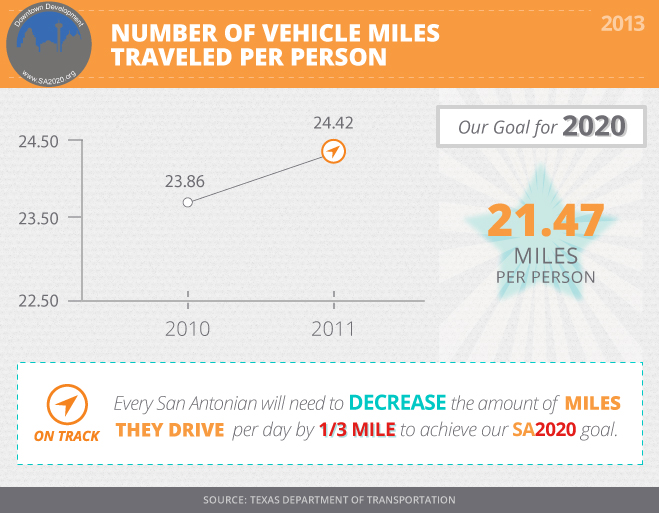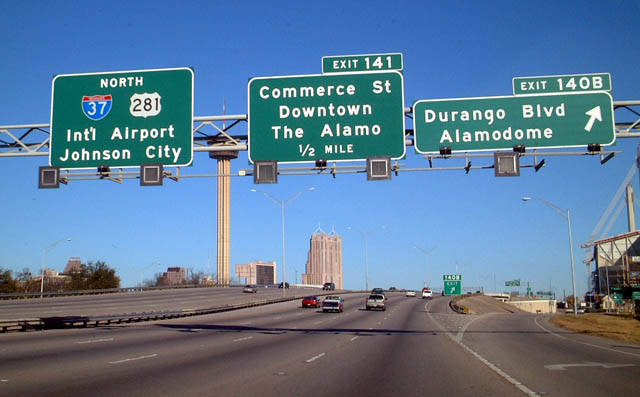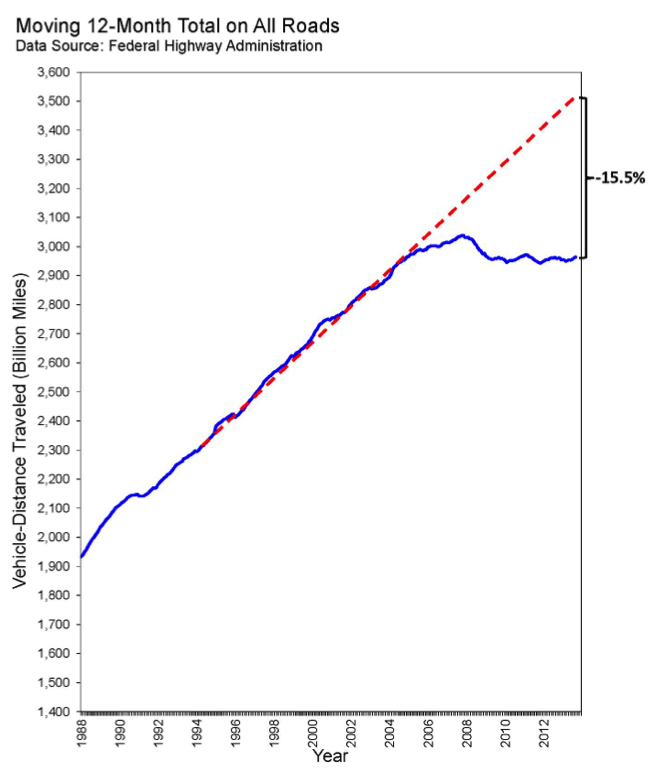Most people are unaware that there has been a startling change in the amount of vehicular travel in cities throughout the world. As in previous U.S. downturns, vehicle miles of travel (VMT) in this country declined with the Great Recession that began in 2007, but, unlike after prior recessions, it still hasn’t recovered. As of September 2013, total annual U.S. VMT is 2.96 billion vehicle miles, down by 2.5% from the high point in November 2007. Vehicular travel is down over 15% from what would be expected based on past trends.
As of August 31, 2012, VMT on the state roadway system in Bexar County is down 4.5% from the 2006 peak. The population of the County increased by 13.5% over the same time period.
Participants in the SA2020 process identified a goal of reducing VMT per person by 10% by 2020. VMT is the most common way to express the amount of vehicular travel in an area, and it turns out that VMT is strongly correlated with traffic fatalities, air pollution, energy consumption, congestion, public health issues and travel costs. Reducing VMT has become the “Holy Grail” for transportation planners working on sustainability and climate issues.

Vehicle Miles Traveled is an SA2020 Indicator originally in the Downtown Development Cause Area, moved to Transportation in the Updated SA2020 Indicators Report.
So, why has the growth in VMT been reduced so dramatically? One explanation is that the trends that were causing such a dramatic increase in vehicular travel in the past (labor force participation, vehicle ownership and licensure levels, migration to city from suburbs, roadway network expansion, and shifts to personal vehicle travel) have run their course. According to a recent report, more workers are working out of their homes; household vehicle ownership is down; and travel by bicycle and transit is up. Others point to Baby Boomers aging beyond peak travel years and the urban lifestyle of the Millennials. Richard Florida claims that there has been a “great reset.” While still being debated, the price spikes in gasoline seem to have had an impact, including living in neighborhoods with more travel options.
The bottom line is that there is a lot of change happening and it is probably too soon to have a clear understanding of this trend. However, it appears that progress is being made toward the SA2020 goal.



